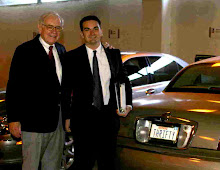Permanent Holding - Part 1
Buffett likes stocks with consistent growth. In my experience very few companies beat Walgreens in this regard. The company has grown its earnings and sales every year for the last thirty-one years, with earnings averaging around 15% growth over this time period. How many other companies can say that? I would be willing to bet you could count them on one hand (but I am not a betting man.)
The company has no debt. And it is growing by leaps and bounds – 432 new stores opened last year to bring the total to 4953. That it can do this solely with equity financing is remarkable, and indicative of the strength of the firm.
I feel Walgreens is doing to the pharmacy industry what Wal-Mart did to retail. I don’t like what this does to a small town spiritually any more than the next guy, but like it or not, mom-and-pop stores are inefficient and will eventually go by the wayside. The independent pharmacy will not be able to compete with Walgreens any more than the old-fashioned dry goods store can compete with Wal-Mart.
Which is an interesting comparison since Wal-Mart competes with Walgreens for pharmacy services. First off, make no mistake about what is Walgreens’ core business. It is prescriptions. The “front-end” sales that might seem more significant are not at all – they comprise only 36% of total revenue. What the photo shop, convenience mart etc do for the company is keep customers regularly visiting the store and much more likely to rely on it for their prescriptions. Walgreens stores are ordinarily located on the corners of major roads in predominately residential areas. Most also have drive-thru service. It should be obvious that Wal-Mart will never be able to offer this type of convenience.
Moreover, the company currently only has 15% market share and thus tremendous room for growth. This is one stock I think will definitely outperform the market over the next 10-20 years.
More on Walgreens later…


1 Comments:
When I say no debt I mean no borrowing. Although the company has a small balance of capital leases, the majority of its properties are obtained under ordinary operating leases that don't qualify under GAAP for capitalization. The remainder, 17%, are simply owned by the company
However, I would argue that it generally makes no difference whether such leases are capitalized on the balance sheet. Economically, the transactions do not change whatsoever. Managers often prefer capital leases to keep earnings higher, but this is clearly irrelevant since cash flow is not affected. Conversely, it is sometimes to the lessee's advantage to keep the leases as operating leases if the lease agreements contain covenants regarding the firms financial condition. Fewer capital leases means a stronger balance sheet on paper.
By Andy Kern, at 21 April, 2006 01:37
Andy Kern, at 21 April, 2006 01:37
Post a Comment
<< Home